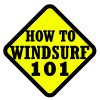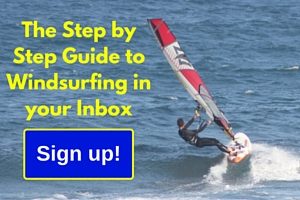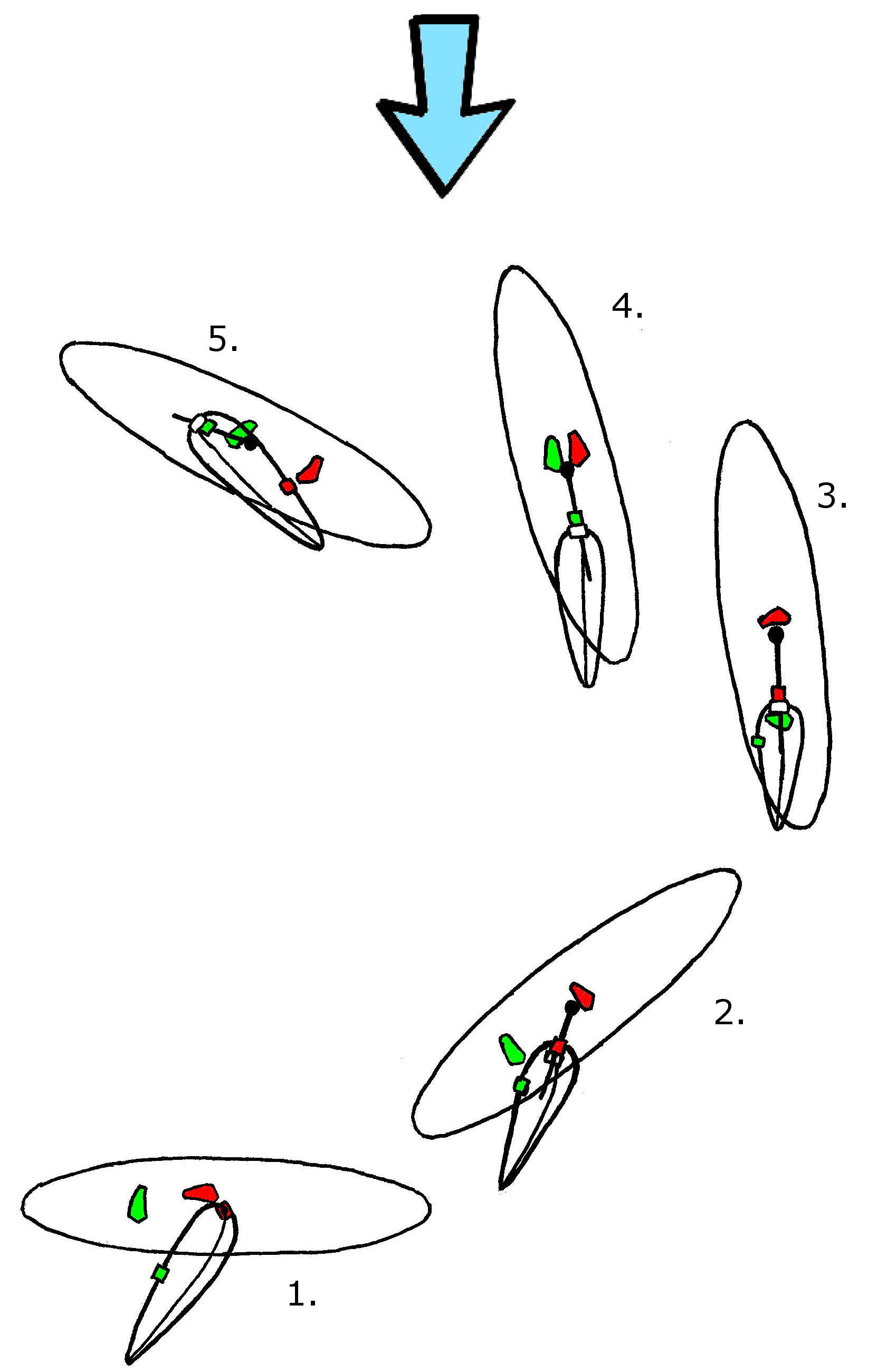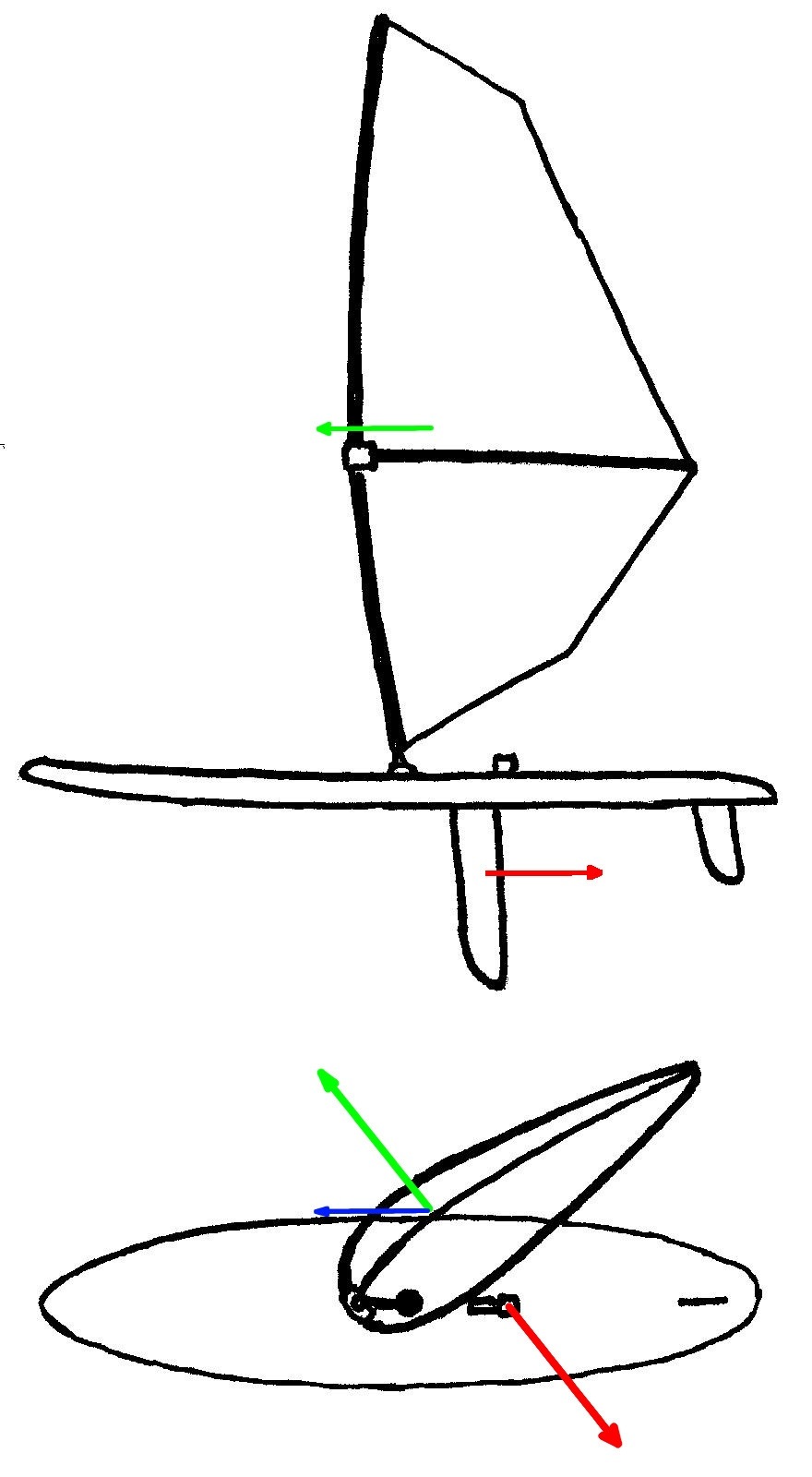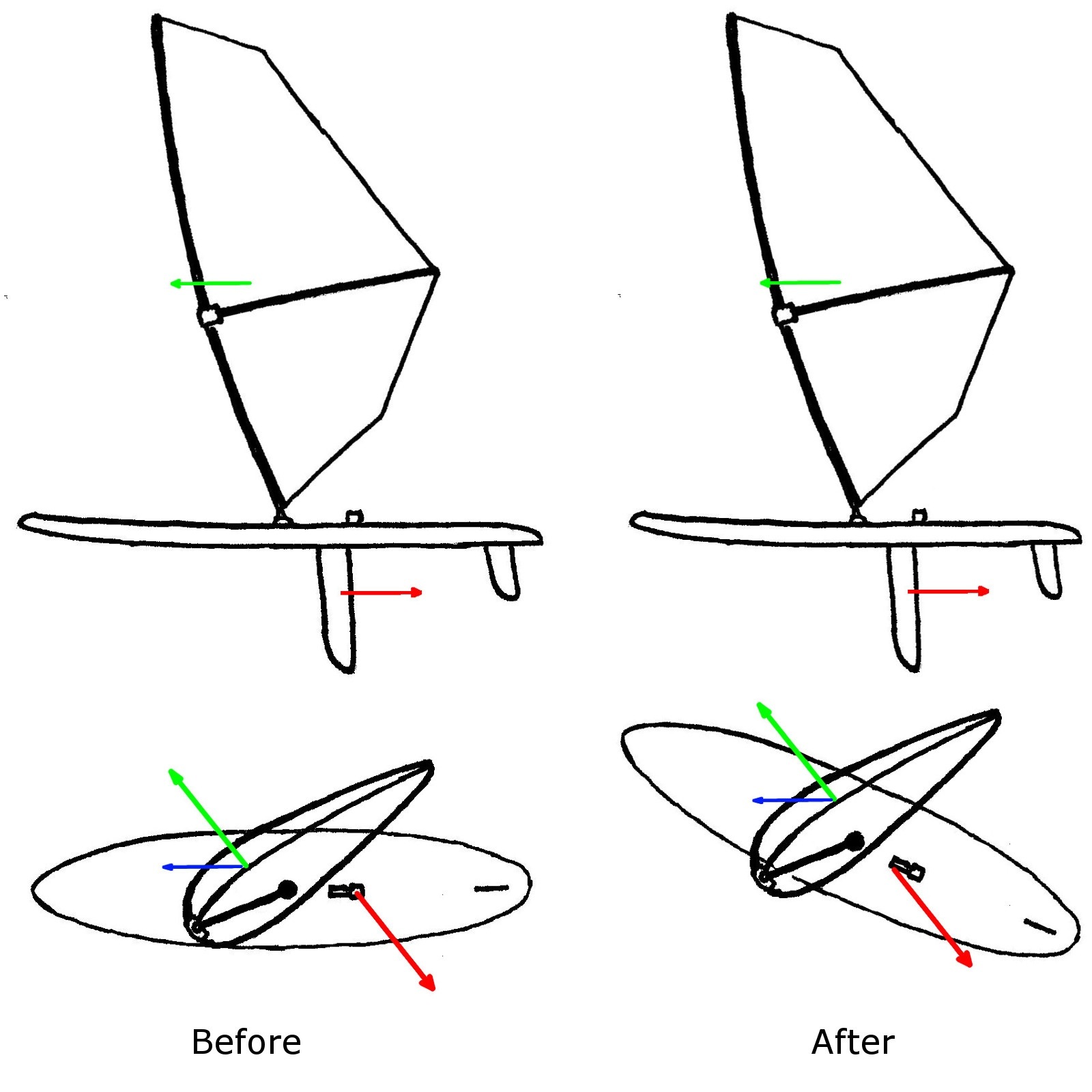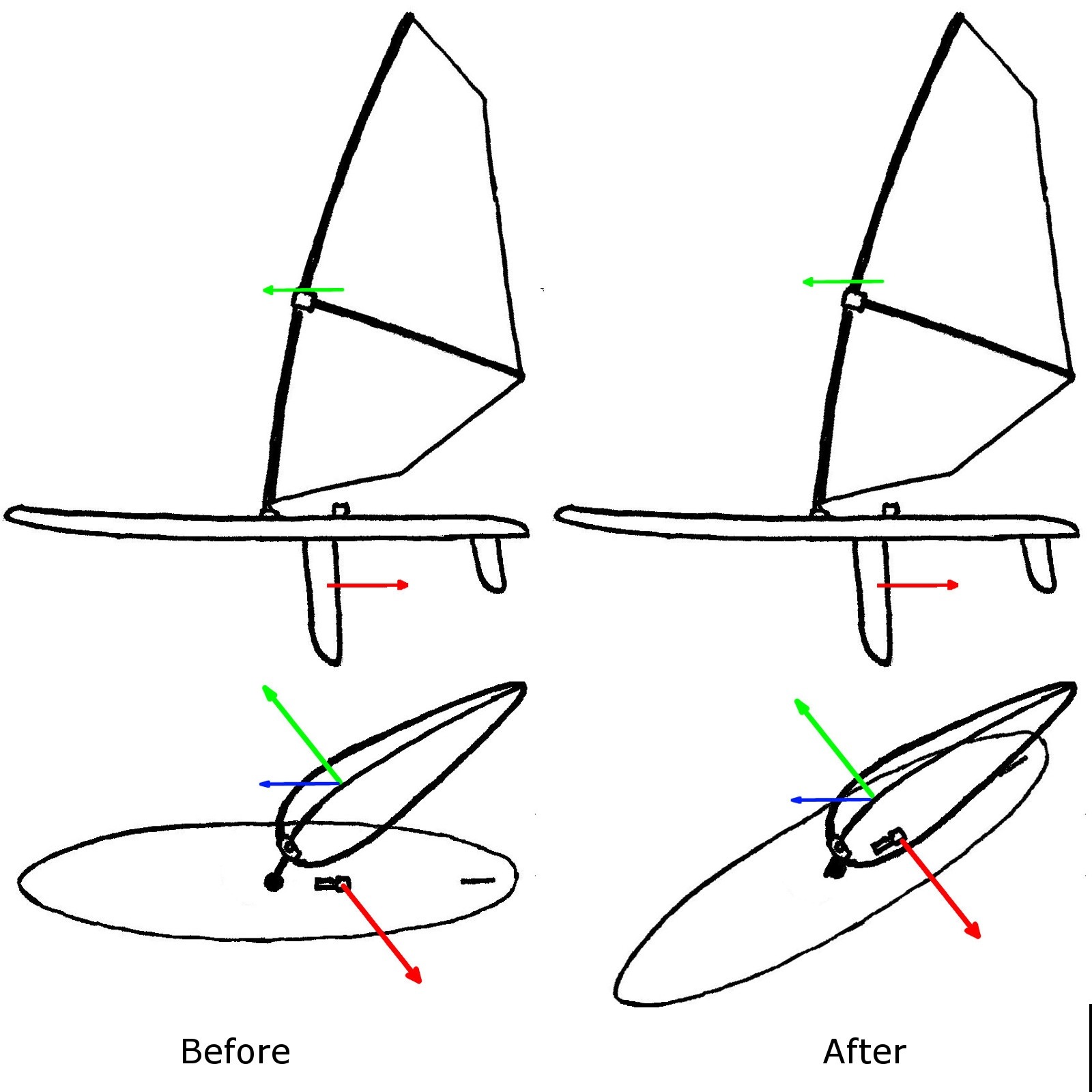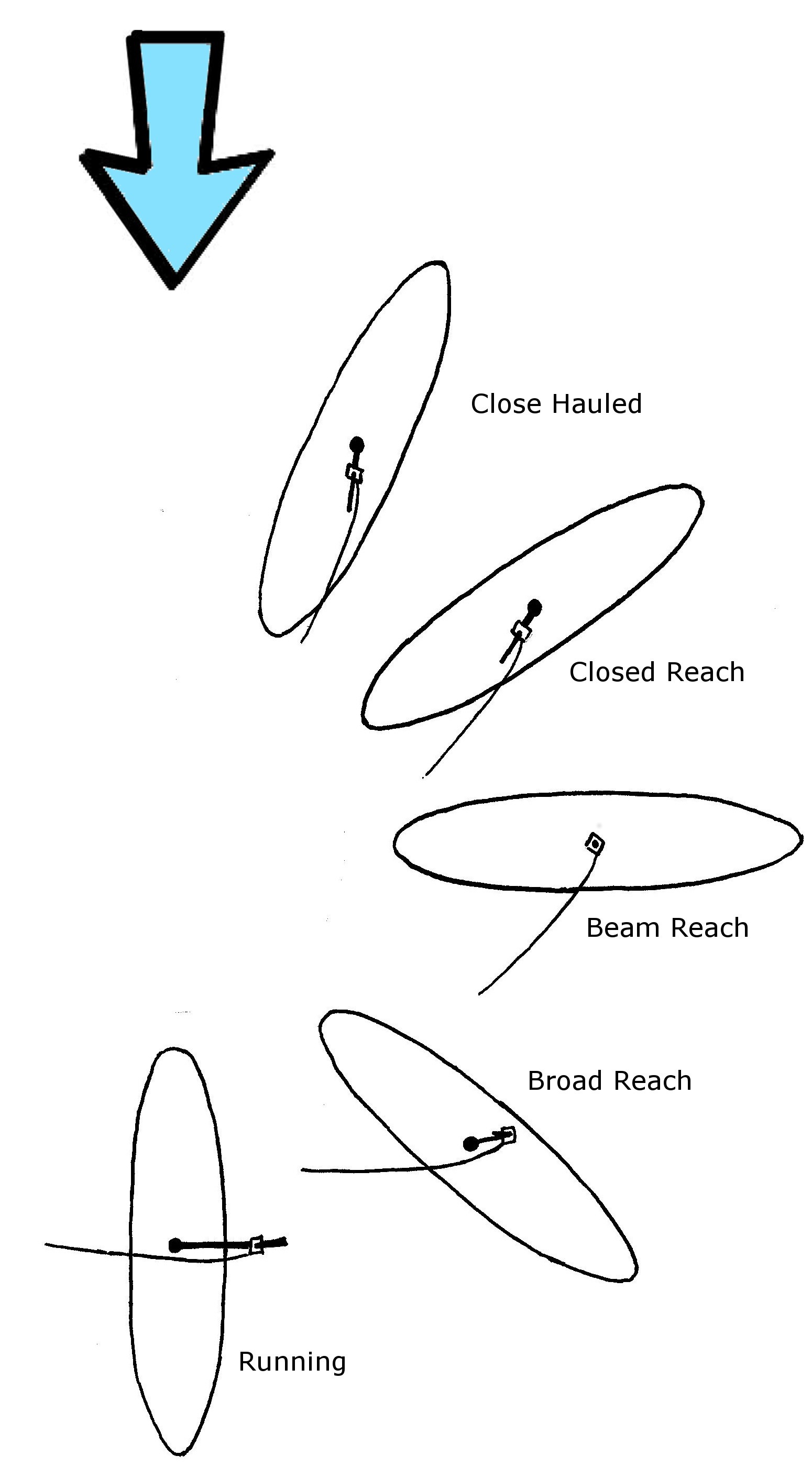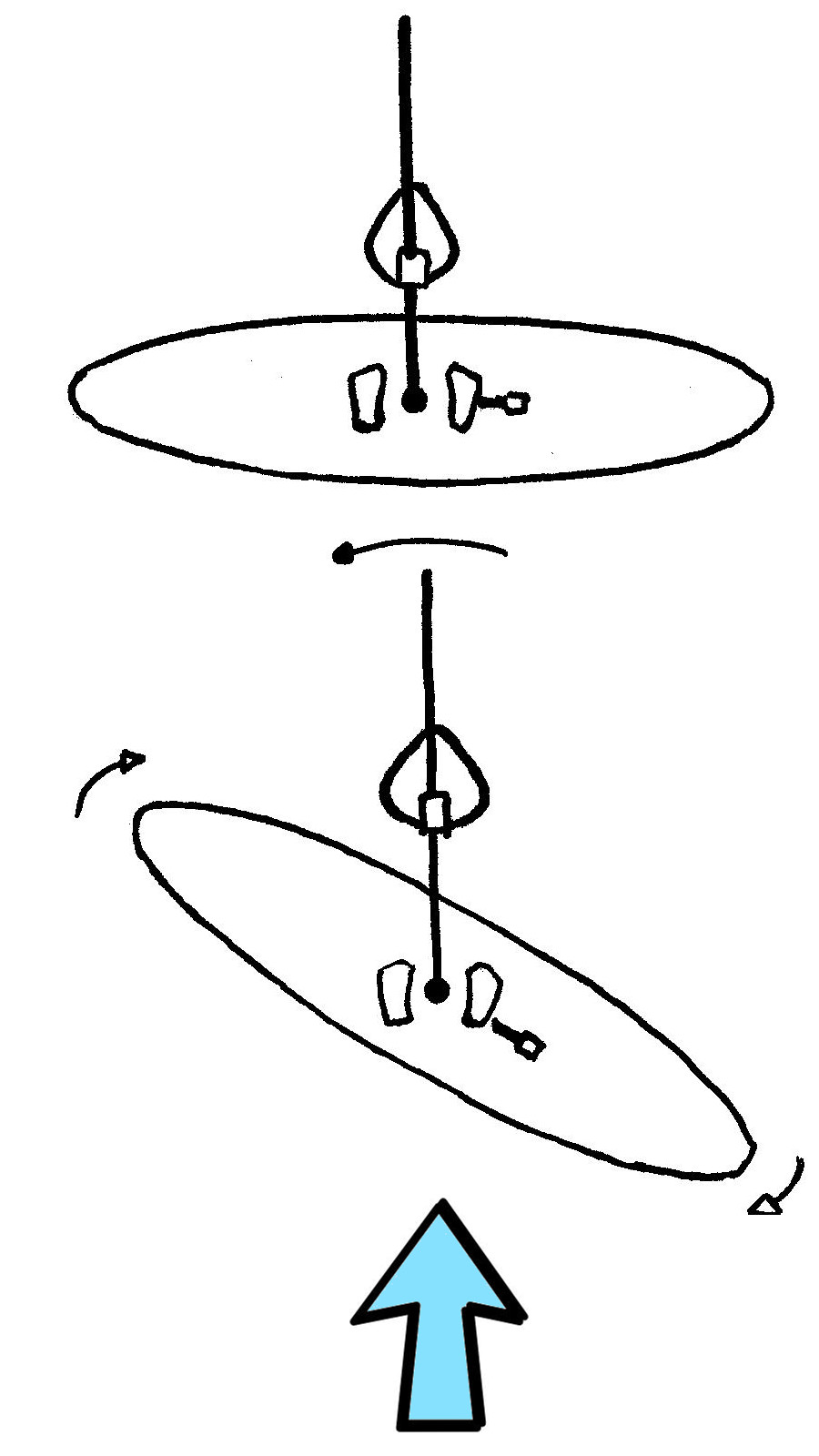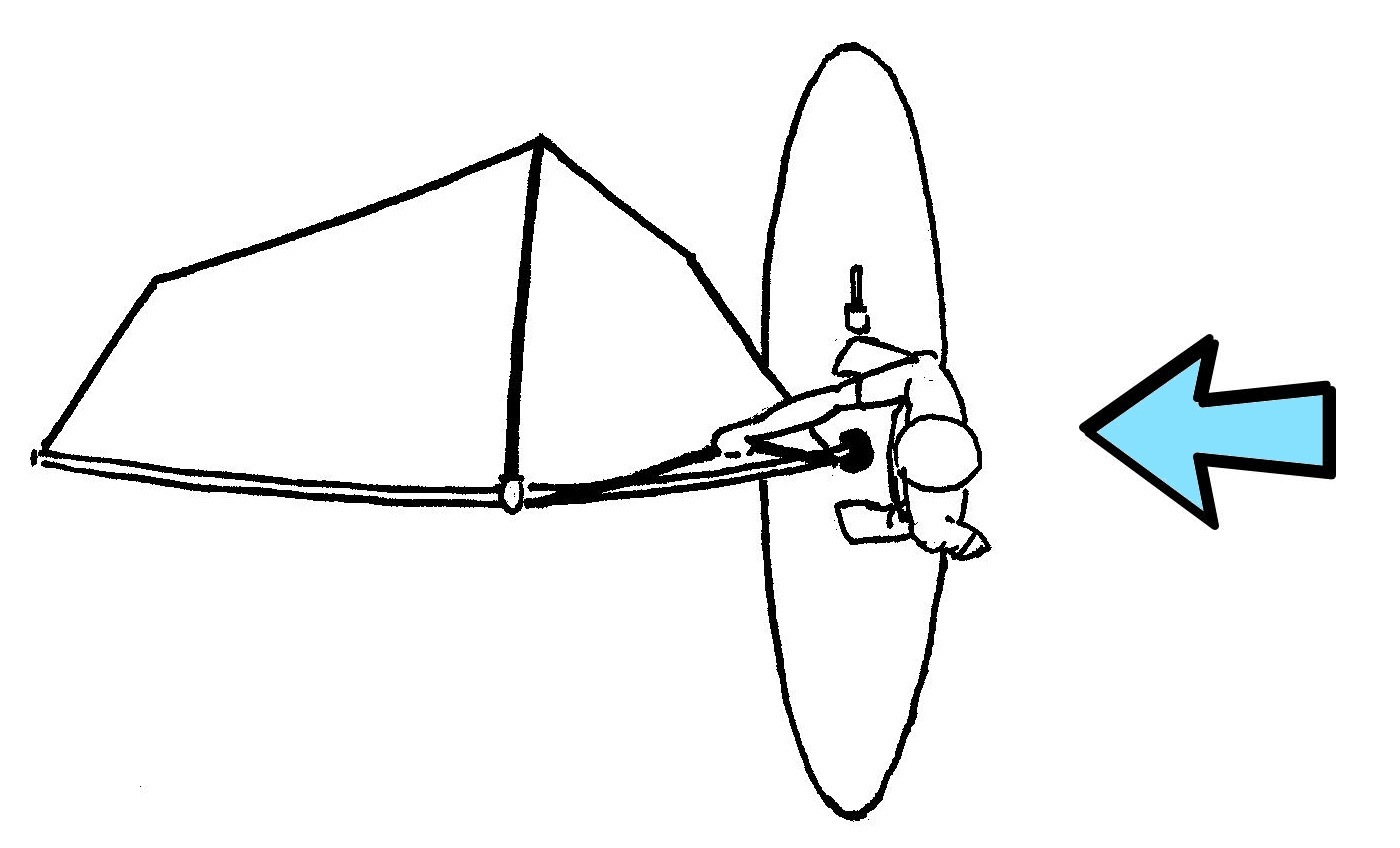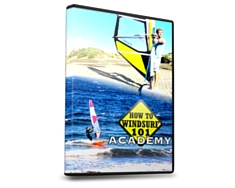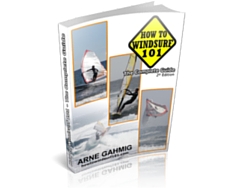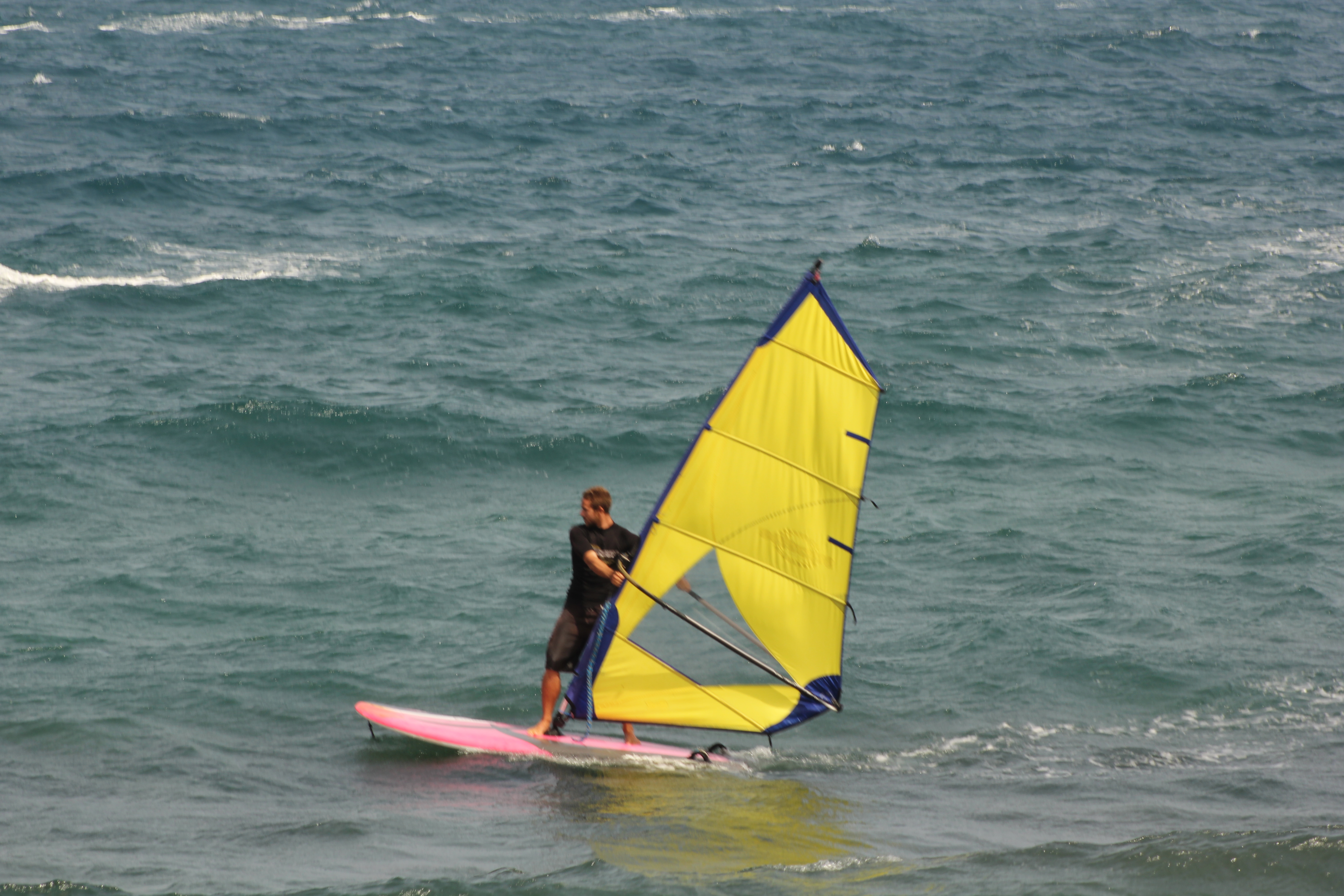
How to Tack
Being able to turn around quickly without falling in is a pretty useful thing to know how to do in windsurfing. However, I would like to note that it is not essential to know in the initial stages of windsurfing. “Why?” you may ask. Well, basically, the way we tack and gybe with big boards and small sails is different to the way we tack and jybe with small boards and big sails and until then we can simply use the basic windsurf turn. With big boards we are going to rely a lot on the spare volume that allows us to float and have stability even when the board is not moving. This is not going to be possible when windsurfing with small boards. These boards won’t have any reserve buoyancy and so won’t float when standing still which means that the technique in tackng and jybing is very different. That being said, knowing how to tack is a useful thing to know and a good thing to practice as we solidify the foundations of our windsurfing technique. After all, it all builds the sensitivity required for the sport.
So let’s get to it. Before we start we want to keep in mind that throughout the whole manoeuvre we want to keep wind power in the sail. We want to try to keep equilibrium not by balancing on the board but by using the wind in the sail. To do this we want to keep one hand on the boom at all times, before and after changing sides. Let´s have at it step by step:
- From the normal sailing position (1.) we put the front hand on the mast just below the boom and the front foot moves to just in front of the mast. As we do this the sail is lowered to the back of the board (or away from the wind) (2.) See why in the post on steering. Important to note, we move and keep our weight on the front foot throughout the whole manoeuvre.
- The board starts turning into the wind. We continue holding the foot and hand positions until the sail is on the new side. A good indicator is when the foot of the sail (the lower edge of the sail) is touching our shin (3.).
- Right then we need quick feet. The longer we take to get from one side with pressure in the sail to the other with pressure on the new side, the more likely it is that we lose balance and fall in.
- We bring the back foot forward to where the front foot was. At the same time the back hand replaces the front hand on the mast. We keep the sail low all the way until this moment (4.).
- Now we simultaneously move the previously front foot to the back and bring the mast forward to bear away from the wind (5.). The weight is transferred on to the foot that is now in front of the mast.
- The board will bear away. As it does this we must start to transfer the weight on to the new back foot gradually and open the sail (sheet out) gradually so that the wind doesn’t build up too much pressure in the sail as we bear away.
The next step is learning how to gybe.
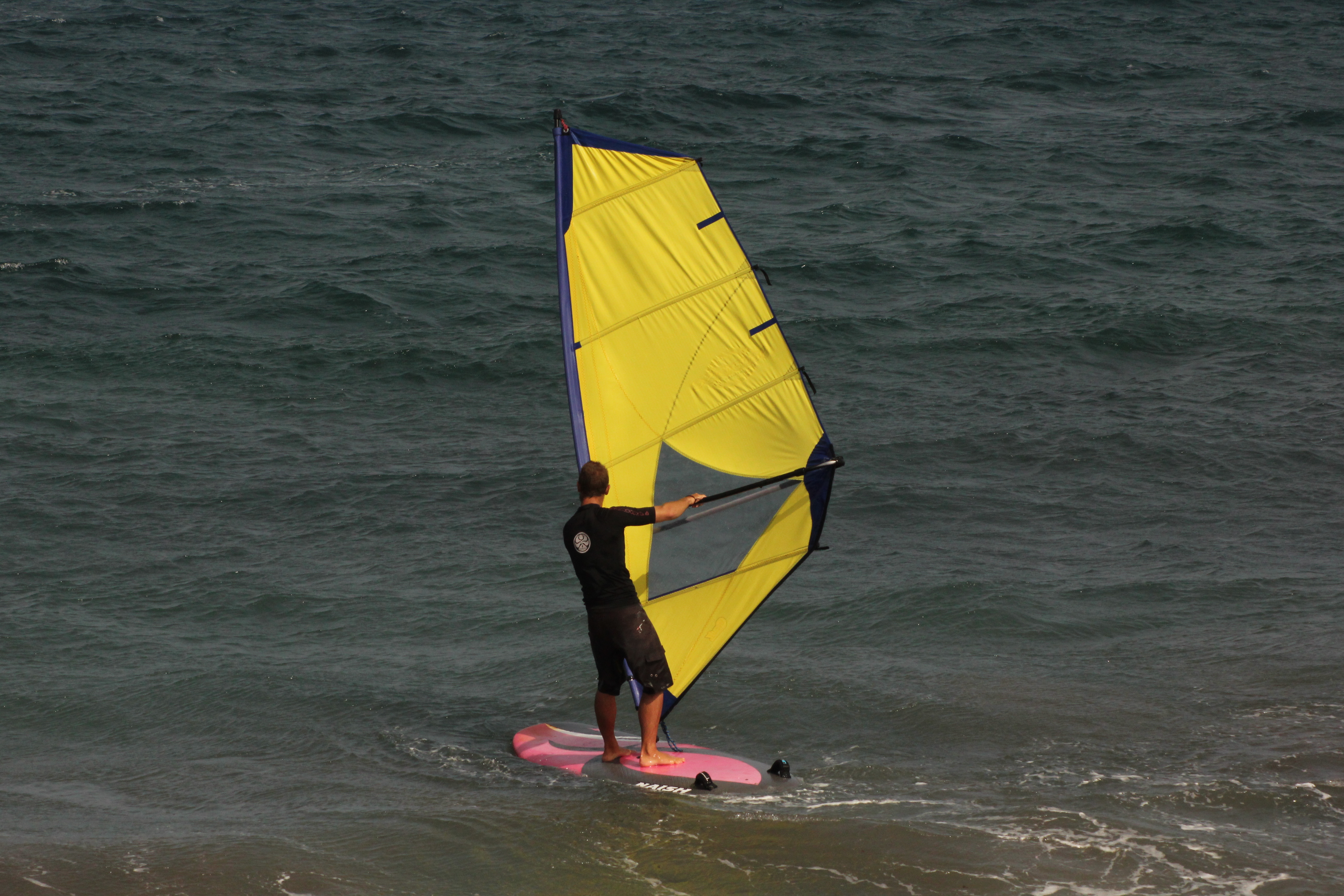
How to Steer + Courses
So we are now able to windsurf in one direction, maybe even in both. If not yet, you can read up on how to turn in windsurfing. Now we want to know how to windsurf towards a specific point. Before we start it is important to clarify that we will not be using the terms right or left as this will change depending in which direction we are sailing in. We will be using towards the “front or back of the board” and “into/towards the wind” and “away from the wind”.
First we must understand why we move forwards in the first place. When we look at the windsurfer from the side and from the top we see this.
The sail has a general pressure point. The arrows are forces. The green one is the wind pushing the sail which is our propulsive force. However, if we didn’t have the counteracting force (red arrow) acting through the centre-board (and later on only the fin) we would just drift downwind. Since both arrows are in line, the board stays on course and only moves in the line of the blue arrow. However, if we were to incline the sail forward (or slightly towards the wind), the arrows are no longer in line. This causes a lever which turns the board downwind so that both arrows are lined up again.
The same thing occurs when we lean the sail back (or away from the wind). Only that in this case the board turns into the wind as the arrows are disalligned in the other direction.
Recap:
Incline the sail forward to turn the board downwind.
Incline the sail backwards to turn the board upwind.
Now let’s get to the individual courses
- Close hauled: This is the course going closest to the wind. If we turn any more into the wind, we stall and lose speed until we stop completely and fall in backwards due to lack of power in the sail.
- Closed reach: This is anywhere between close hauled and beam reach. We are sailing upwind in any case.
- Beam Reach: Here we are sailing 90º to the wind direction.
- Broad Reach: This course includes any angle between beam reach and running. In any case we are going downwind.
- Running: This course describes going downwind or close to it. We are sailing in the direction in which the wind is blowing.
Knowing how to turn upwind and bear away are essential for when we want to tack and jybe (posts coming soon).
Let me know in the comments if this article was useful.
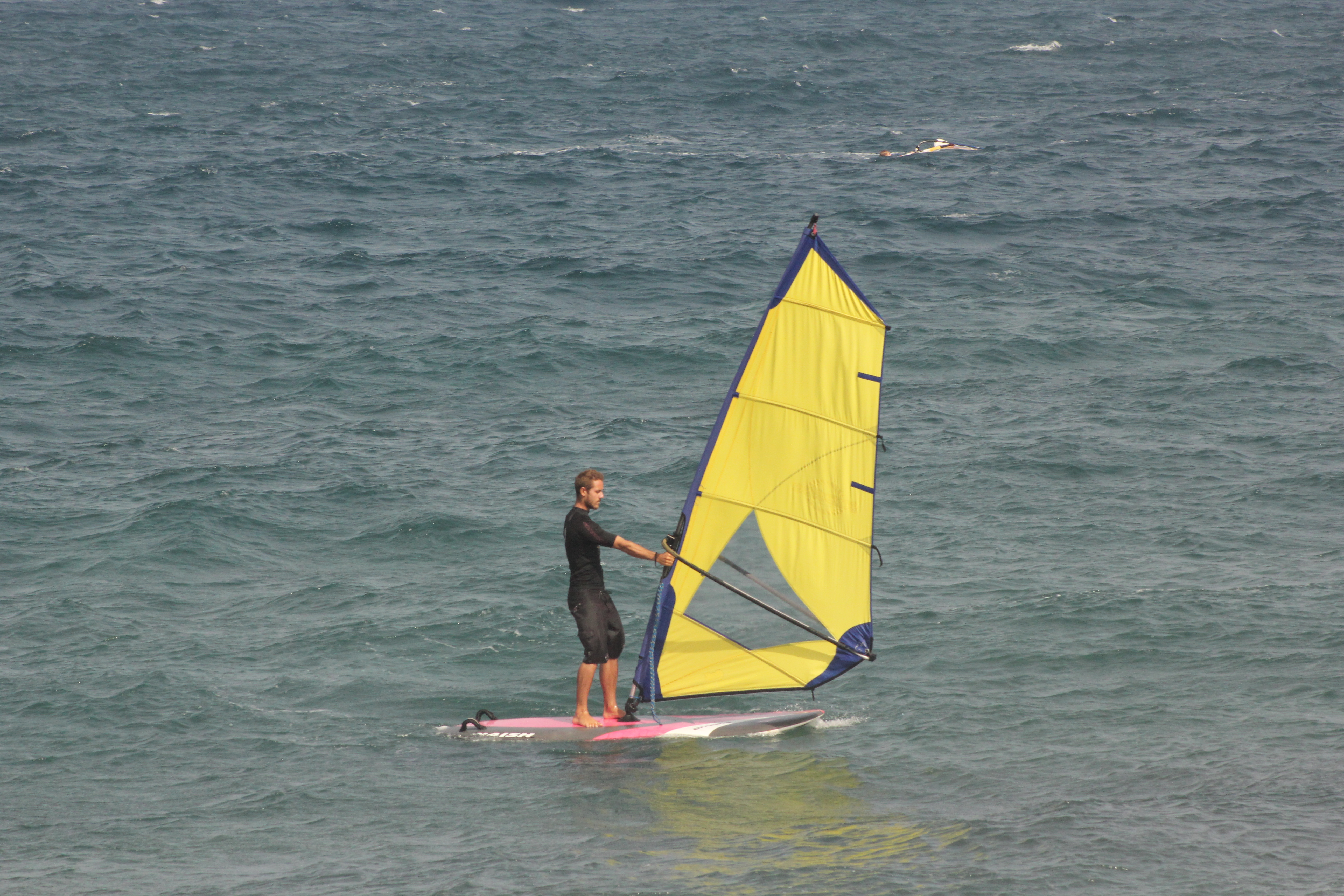
How to Turn
At some point we need to turn to get back to where we came from. So let’s get down to explaining how to control the windsurf board with the sail from the T-position:
By pulling the sail to the left or right we are able to turn the board clockwise or anticlockwise (when looked at from above). The sail will always try to position itself in line with the wind so when we shift it to the left, the board will turn clockwise so that the sail can continue being in line with the wind. Another way of looking at it is to think of the sail as a stationary object which we are holding on to while we turn the board with our feet: we ca either pull with the left foot and push with the right foot to make it turn anti-clockwise, or pull with the right and push with the left to turn it clockwise.
Sail over the front vs. Sail over the back
Sail over the front
This method is easier as we do not need to move our feet around the mast. We only need to turn over our own axis. The downside: we drift downwind more.
Sail over the back
This way is a little more complicated as we need to move around the mast with our feet while the sail is pulled over the back of the board (where we were standing a moment ago). The advantage is that we do not lose much gained reach.
Initially I recommend to pass the sail over the back of the board since if we pass it over the front, the board will point downwind and we will lose some gained upwind reach. Once we consistently hold the closed reach course (more on this in the next post) we can sacrifice a little gained reach by passing the sail over the front.
A small tip: Always position your feet so they are facing in line with the mast. If you ignore this little detail you will fall in more times than necessary.
This technique is only for turning on the spot. Later on we will replace this type of turning with the tack and the jybe. However, for this we need to know how to steer the board with the sail.
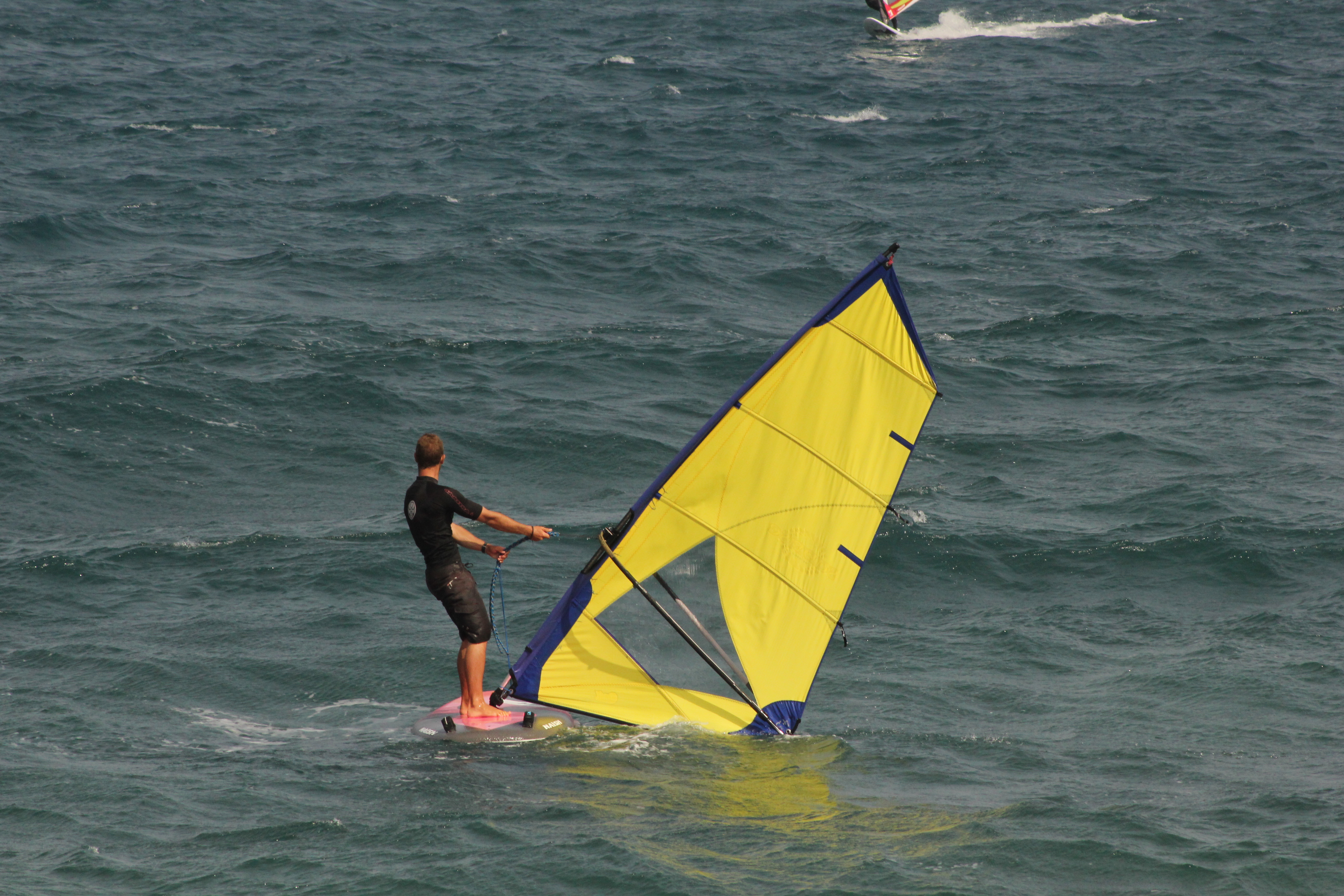
How to Windsurf – How to Start Windsurfing
| Disclaimer: I believe I should strongly advise you to get an instructor to teach you how to windsurf. Especially if it’s going to be your first attempt ever at windsurfing. Windsurfing is a very technical sport and you can make a lot of mistakes and go through a lot of frustration if you try to learn on your own or strain a friendship if you accept having a friend teach you. All the material I give away is intended mainly to serve as a refresh so you can correct any bad habits that might have sneaked in throughout the unsupervised sessions and hindering your progress. |
|---|
Safety
Windsurfing is a sport that is done in a potentially hostile environment. This means that before we hit the water it is important that we must take the time to ensure that we will be getting back to shore. There are many thorough articles on safety out there and I will write one myself shortly. For now keep in mind these checklist items:
- Check your windsurf gear to make sure it isn’t faulty and breaks while on the water
- Avoid windsurfing in offshore winds (if you do, keep close to the shore, if possible where you can still stand)
- Don’t go windsurfing alone. If there are others on the water they can get help if need be
- Wear clothing that will keep you warm if you need to swim for at least an hour
Check out the safety recommendations at learntowindsurf.com or check out my post on safety in windsurfing for more info.
How to Windsurf
Now to the actual learning how to windsurf:
Before we start, we must first determine the direction of the wind and adjust the board and sail position accordingly. The board and sail will be put into the T-position. This means that the board will be set out 90º to the wind, and the sail 90º to the board pointing downwind.
Now with one foot on either side of the mast-foot we grab the up-haul and making sure we stand up straight start pulling up the sail. Why the back straight? The sail can be anywhere from 2.5 to 6m2 big, maybe even bigger. All that surface is filled with water which makes it very heavy. Trying to lift this through our back instead of the legs can and will hurt your back. Pressing up with your legs is a simple way to avoid pulling a muscle or doing other serious damage to your back. This factor is usually something we forget about quickly, especially as we get tired. Try not to forget! The easiest way to pull out the sail is to stand up straight and to turn our shoulders and move up the up-haul line with our hands until the mast is in our reach with the next shoulder turn. read more…
